|
|
John Meads 2013 |
|
|
The Burton Latimer
Home Guard
|
|
|
In common with all communities at the outbreak of the Second World War Burton Latimer soon formed its own company of the Local Defence Volunteers, soon to be re-named the Home Guard. At first, Burton Latimer was designated as D Company of the 5th (Kettering District) Battalion, part of the Market Harborough Sector. It transferred to C Company (Rothwell and District) in 1943. The men wore the cap badge of the Northamptonshire Regiment. Throughout the war its job, with the other neighbouring companies, was to guard the vulnerable points (V.P.s) in its area, which were the Sterling Metals munitions factory in Station Road (now Alumasc) and the airfields at Grafton Underwood, Desborough and Harrington. The companies responsible for these V.P.s maintained a strict liaison with their static defence units at all times. The strategy of the Battalion varied during the course of the war, but was generally based on a series of defended localities, Burton Latimer’s responsibility being Geddington, Cranford and Burton Latimer. Each company had a trained mobile battle platoon in its own area, and ready also, if required, to join a mobile battle company which was based on Rothwell. The operational role of the Battalion was to deny main roads to the enemy, with particular regard for the protection of the road and railway systems converging on Kettering.
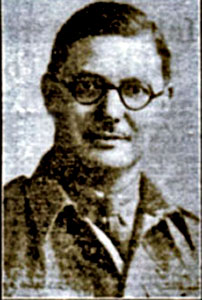 |
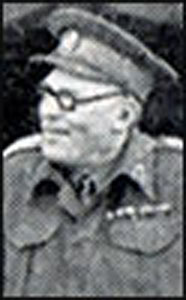 |
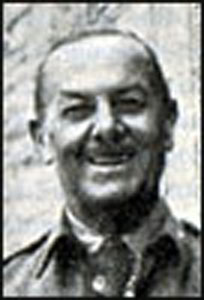 |
|
Platoon Commander until Nov.
1940, Otto Vermaas
|
Col. H.
Burditt
|
Lt Col Sir
Frederick
Robinson
|
The first Platoon Commander of the Burton Latimer Home Guard was Otto Vermaas who was Company Secretary at the Weetabix Mills. He left in 1940 to join the regular army as a lieutenant in the R.A.S.C. The local paper records that a "smoking concert" was held at the Dukes Arms to say farewell, which Col. Burditt and Lt. Col. Sir Frederick Robinson also attended. The 5th Battalion (Kettering District) was commanded at first by Colonel H. Burditt of Desborough but he was given another post in late 1940 and replaced by Lt. Col. Sir Frederick Robinson of Cranford for the remainder of the war. After Lt. Vermaas left in 1940, Major B. Wright MC commanded D Company (Burton Latimer) until April 1942 when Major R.W. Waterfield (Headmaster at Broughton village school) took command. He was succeeded by Lt. E. Keith Coles (Shoe manufacturer) and its Ammunition Officer was Lt. Albert Cooke (Landlord of the Dukes Arms) The Home Guard was “stood down” on 3rd December 1944 when it was decided the Allies progress in Europe made it impossible for the enemy to invade Britain.
|
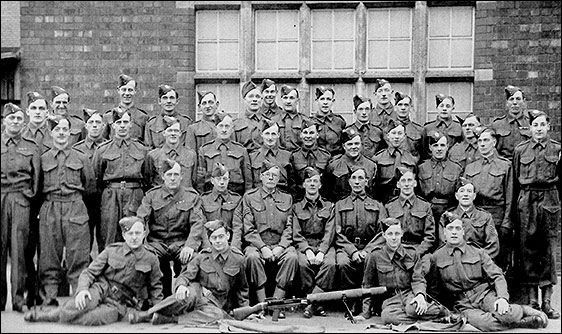 |
This photograph was taken in the Council School playground in the High Street (now St. Mary's Primary Academy) probably in 1941 and is a mixture of 'Old Soldiers' from the First World War, youths too young to join up and men in reserved occupations.
They are named as (Back row): R. Congreve, C. Hill, T. Dadd, L. Savoury, B. Coles, E. Drage, G. Mutton, J. Bennie, C. Perkins, O. Perkins, C. Stockton, E. Knighton, D. Mould, T. Buswell, H. Styles. (Second row): B. Clipson, C. Coleman, L. Scott, C. Hendry, W. Downing, F. Gardner, E. Pinnock, W. Bond, E. Cox, L. Capps, W. Lievesley, A. Brown, P. Bellamy. (Seated): C. Brown, G. Lewis, G. Hancock (who served in the South African War), A.F. Cooke, G. Knighton, W. Patrick, A. Elliott. (On the ground): W. Underwood, B. Robinson, P. Streather, O. Love.
|
|
| A practice firing range was created out of a former clay pit that had belonged to the Burton Latimer brickworks at the end of School Lane, now the site of Croxen Close. However, training took place all around Burton Latimer and there are photographs of training in fields off Cranford Road. Drill practice took place in the playground of the then Council School in the High Street and the men took turns in manning the observation post on the tower of St. Mary's Church, watching for parachutists as well as fire-watching when the air raid siren was sounded. However, some of the duties were more enjoyable. In a 1961 newspaper article about their fifty years as choristers at St. Mary’s Church, twins Alfred and Harry Tailby were reported as being instrumental in forming the Home Guard carol party that collected over £100 for the Red Cross during the war. |
|
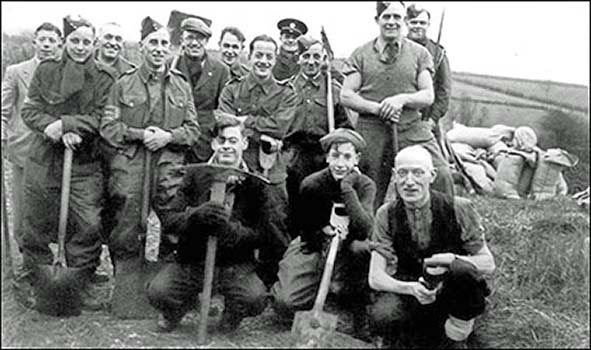 |
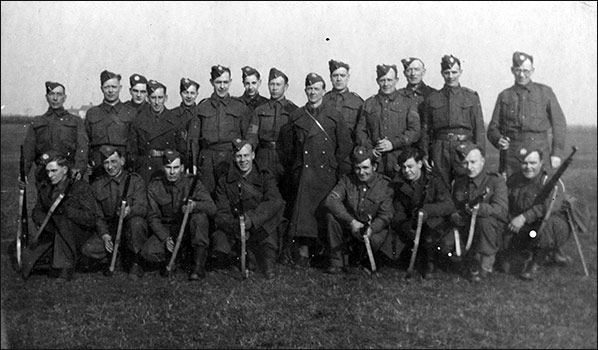 |
|
This cheerful group of Home Guards may have been working on the rifle range near
Croxens Yard. They are: back row: W.R.(Bob) Dukes, Bernie Clipson, ??, Cyril Perkins,
Ron Coleman in fireman's uniform, E. Cox. Middle row: Phil Streather, Walt Patrick,
Cecil Coleman, Bob Coles, A.V.C (Claude). Brown. At the front: Bernard Robinson,
P. Bellamy and Cyril Stockton.
|
Training in a field in Cranford Road with Windmill Cottages in the background. Training
normally took place on Tuesday and Thursday evenings and Sunday mornings but
exercises, some involving Regular Army units, were also held towards the end of the war
|
|
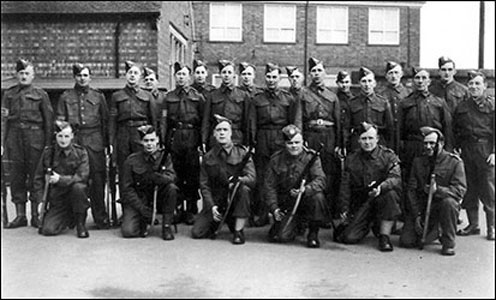 |
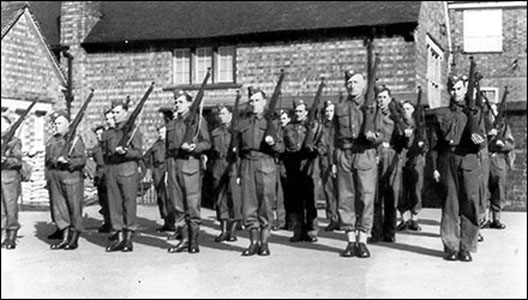 |
|
Back row: Walter Piper, P. Bellamy, Cyril Perkins, L. Scott, G. Mutton,
Cyril Stockton, Roger Congreve. Middle row: Frank Gardner, ??, ??, Len
Capps, Phil Streather, W. Bond, CharlesVillette (?), Walt Patrick, George
Knighton, Arthur Elliott. Front row: Eric Pinnock, Bernard Robinson, Oliver
Love, E. Cox, Claude Brown, ??
|
On parade in the Council School playground in about 1941. Some men may
appear in one photograph but are not seen in others.This probably due to the
fact that among them were some in occupations that prevented them from
attending every parade, such as bakers, farmers, dairymen and even one who
was an undertaker.
|
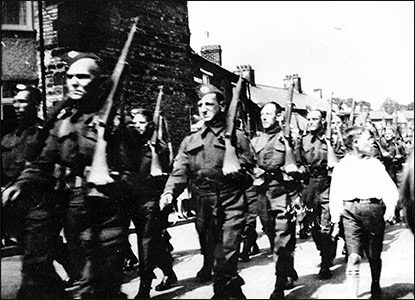 |
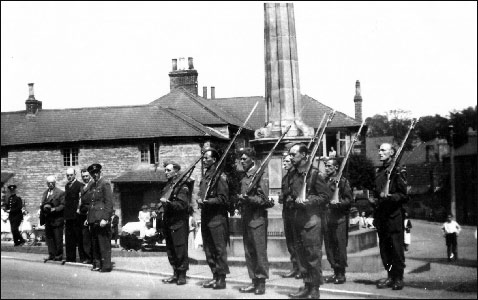 |
|
This photograph and the one on the right are thought to have
been taken on the same occasion - at a Salute the Soldier
Week parade in 1944. The one above shows Dennis Buckby
marching alongside his father in Church Street.
|
The guard of honour at the War Memorial. Members of the Urban District
Council are standing on the left. The chairman A.V. Morley is standing
between A.G. Miller (holding the hat) and R.J. Mackintosh
|
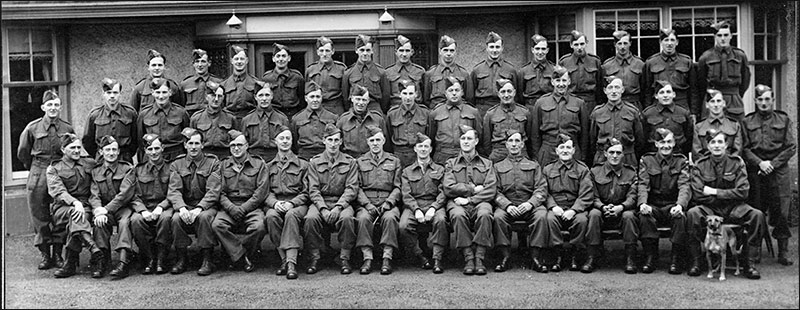 |
This group photograph was probably taken in after 1943 when the Burton Latimer Company was amalgamated with
C Company (Rothwell and District) which could explain why there are so many unidentified men.
L-R: Back row: ……..….? …..…….? …..…….? Basil Taylor, Arthur Dunkley, Ben Clegg, Alf Knighton, …..…….? …..…….?
Arthur Haynes, Duncan Downie, …..…….? …..…….? Roger Congreve. Middle row: Walter Clipson, Ken Desborough,
Ernie Catling, Arthur Butlin, E. Drage, …..…….? ……..….? Patrick Stokes, Bill Goodliffe, ……..….? Cyril Stockton, …..…….?
Walt Patrick, Oliver Perkins. Front row: …..…….? Charlie Clews(?), …..…….? ……..….? E.K.Coles, ..……….? ……..….?
Albert Cook,..……….? George Knighton, Arthur Elliott, …..…….? …..…….? …..…….?
|
Organisational details from ‘Northamptonshire Home Guard 1940 – 1945’ by B.G. Holloway and H. Banks |
|
|










